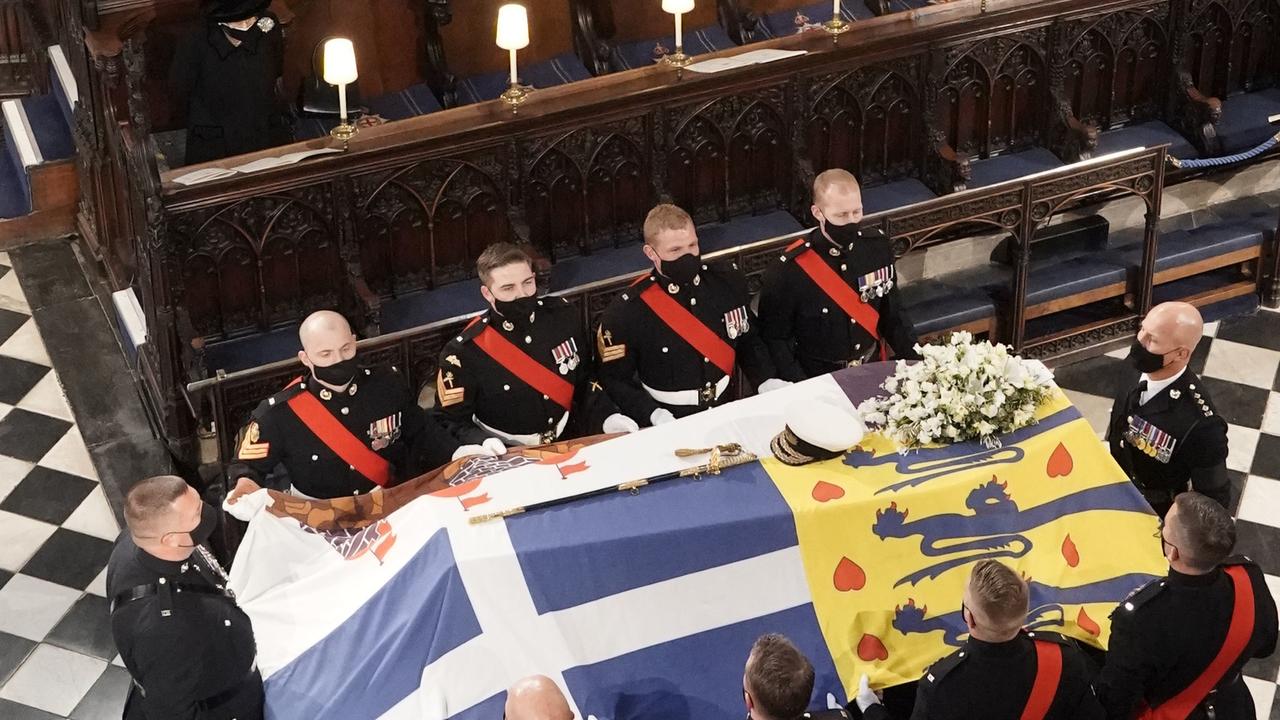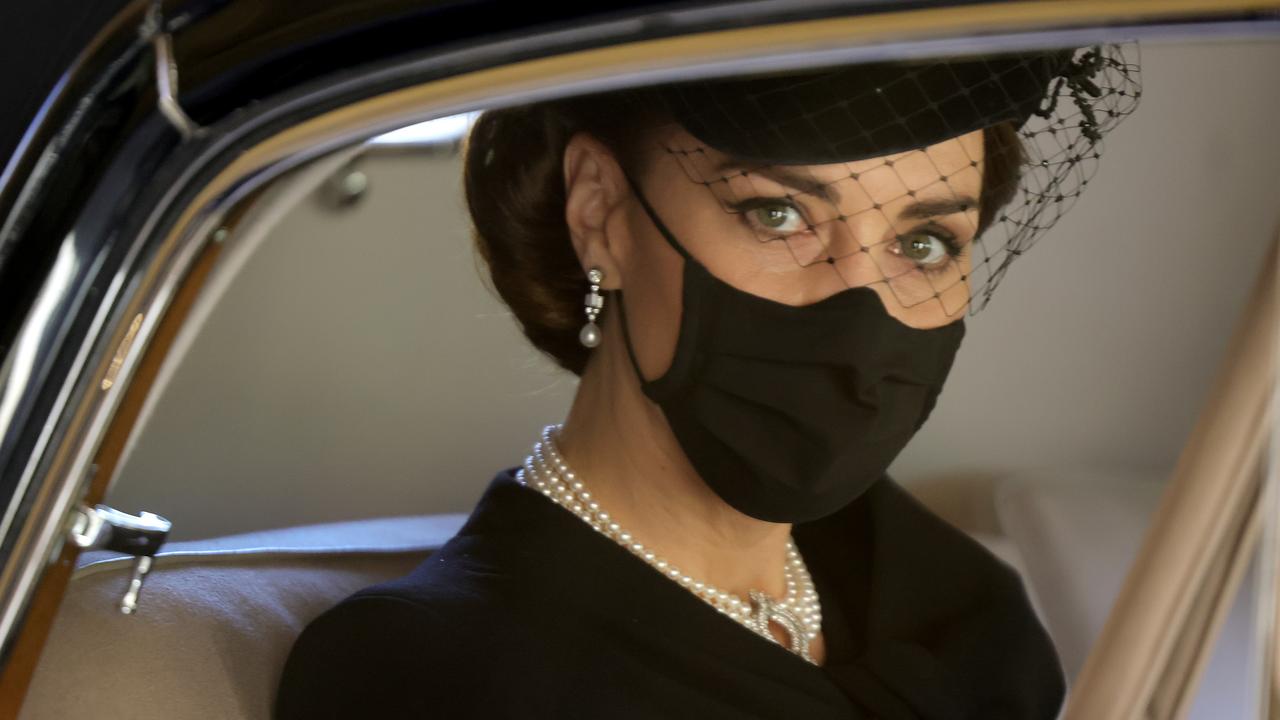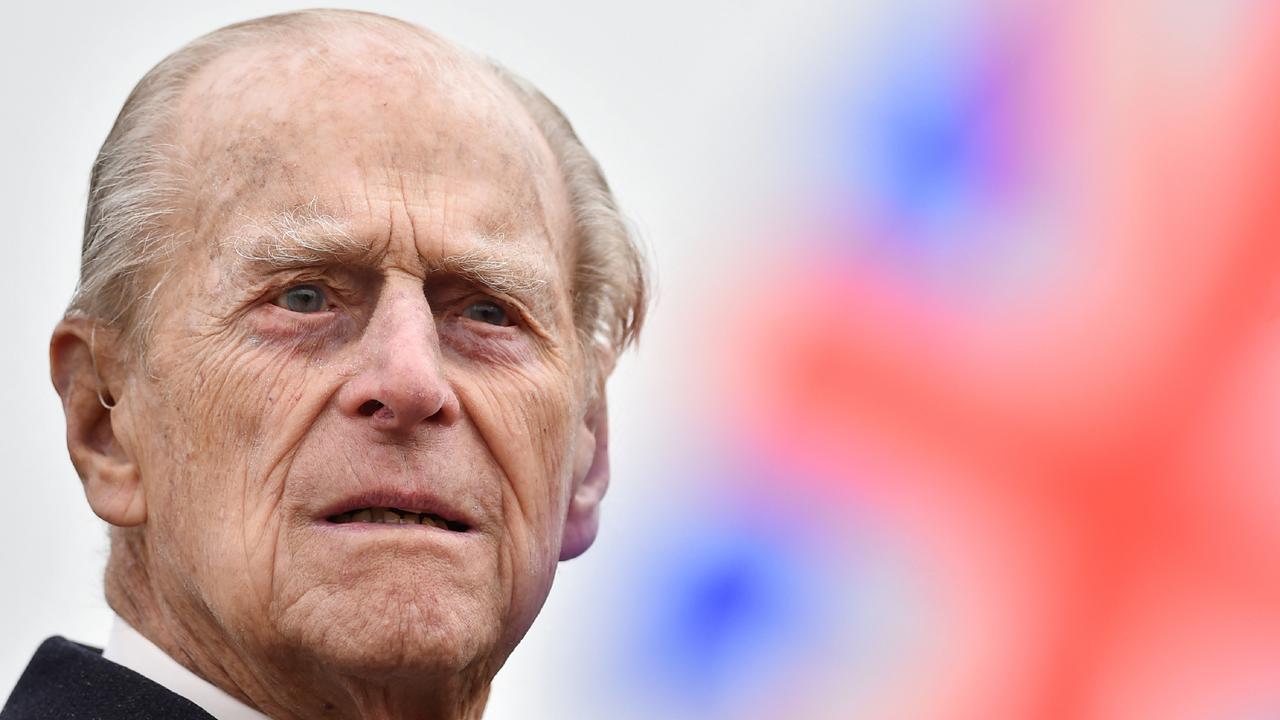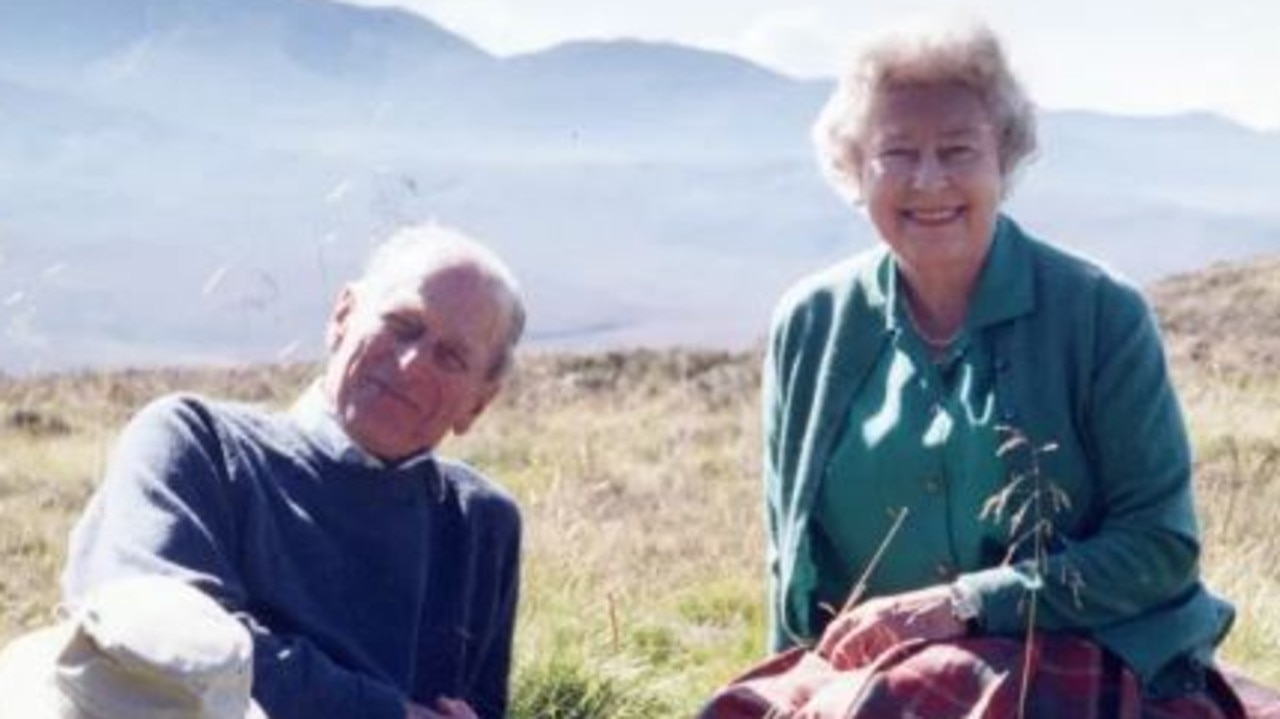Prince Philip’s coffin lowered into Royal Vault in unprecedented moment never seen on TV before
Those watching Prince Philip’s funeral were shown something they had never been allowed to witness before.
Prince Philip’s coffin was lowered into the Royal Vault in front of millions of viewers in an unprecedented move televised for the first time ever.
The groundbreaking moment came during the Duke of Edinburgh’s funeral service when his coffin was lowered by an electric motor, marking a first in British Royal history.

RELATED: Prince Philip’s funeral: In pictures
Usually the movement of the coffin being placed into the vault beneath the floor of the Quire of St George’s Chapel takes place in private.
But for the first time, the BBC and Sky News broadcasted the poignant moment, after millions tuned in to watch Prince Philip’s final journey.
As it was lowered into the Royal Vault, the Garter King of Arms proclaimed the Duke’s “styles and titles” which were read out in full.
As planned by Philip himself, the naval call to arms, Action Stations, was played as the coffin was lowered.
Joe Little, managing editor of Majesty magazine, described the moment as “unique in British royal history”.

RELATED: Kate takes charge as brothers meet
At George VI’s funeral in 1952, the King’s coffin was lowered into the Vault but the proceedings were not televised so the working operation of the motor has not been broadcast before.
Photographs of the occasion taken from a distance show the new Queen Elizabeth II standing in front of the space on the floor after the coffin had descended.
She sprinkled earth into the vault and stood with the widowed Queen Mother, her sister Princess Margaret and the King’s sister Princess Mary.
Due to Covid restrictions the Queen was forced to sit alone inside Windsor Castle’s St George’s Chapel as she lead the Royal Family in mourning at the funeral of her beloved husband, the Duke of Edinburgh.
Dressed in a face mask and in sombre black, it was the first time the monarch, grieving for her devoted companion of 73 years, has been officially seen in public since Philip died eight days ago.
Accompanied by her loyal lady-in-waiting Lady Susan Hussey, the Queen made her way from the Sovereign’s Entrance in the State Bentley, as the national anthem was played, to join the solemn funeral procession.
Philip’s coffin rested on a catafalque in the Quire and was draped with his personal standard, and decorated with a wreath of flowers and his Naval cap and sword.
The sword was given to him by King George VI on the occasion of his marriage to Princess Elizabeth in 1947 and is engraved with a message from his father-in-law.

RELATED: Heartbreaking images of lonely Queen
The duke also personally selected the regalia – the medals and decorations conferred on him by the UK and Commonwealth countries – together with his Royal Air Force wings and Field Marshal’s baton.
The Royal Vault at Windsor was created between 1804 and 1810 for George III, who died in 1820 and is buried along with George IV and William IV.
Others buried there include George III’s wife Queen Charlotte and their daughter Princess Amelia, who was the first to be interred there.
George IV’s daughter Princess Charlotte and Queen Victoria’s father the Duke of Kent were also placed in the vault.
Princess Margaret, who died in 2002, was cremated and her ashes were initially placed in the Royal Vault, before being moved to the George VI memorial chapel with her parents’ coffins when the Queen Mother died just weeks later.

RELATED: William and Harry kept separate for sad reunion
The vault is not the duke’s final resting place, as he will be transferred to the church’s King George VI memorial chapel to lie alongside his devoted wife of 73 years when she dies.
The tiny chapel houses the remains of George VI, the Queen Mother and Princess Margaret.
George VI was interred into the Royal Vault first and moved to the memorial chapel annex when it was built 17 years later.
The Quire was the first part of the chapel to be completed, with the aisles finished and roofed between 1477 and 1483.
Originally there were fifty stalls for the Knights and Cannons, but in the late eighteenth century two further stalls were added to take it to fifty two.
In the centre of the Quire a ledger stone site to mark the burial place of King Henry VIII and King Charles I.
Jane Seymour, one of Henry VIII wives is also buried with them, and the chamber was discovered during restoration works in 1837.
King William IV instructed that the stone should be placed there to mark to spot.

RELATED: Philip’s body will be moved again
Architect James Wyatt had the area below the chapel dug out to create the new vaulted crypt.
It was designed so that a coffin could be taken via a lift and shaft from the quire directly into the vault itself.
In 1817, George IV requested that an entrance be made behind the altar, which is now the main entrance to the Royal Vault.
The vault, which is not accessible to the public, is 82ft long, 28ft wide and 13ft high.
This article originally appeared on The Sun and was reproduced with permission



